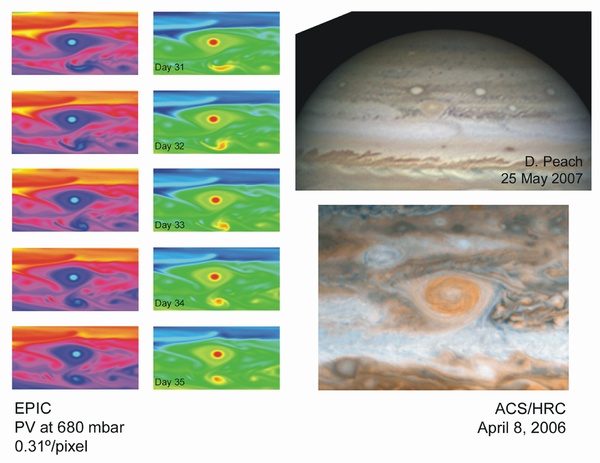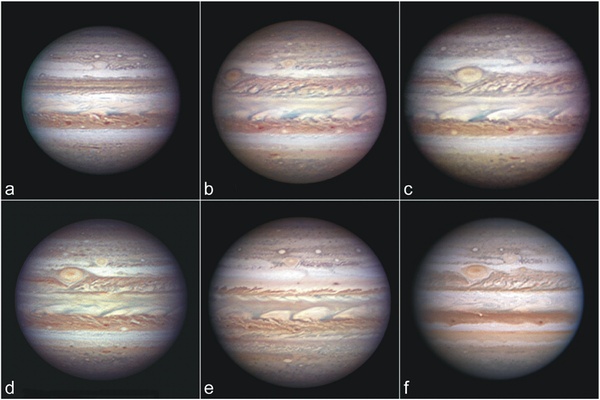A study has given new insights into why Oval BA, a giant anticyclone on Jupiter also known as Red Spot Junior, suddenly turned from white to red in a period of just a few months.
The Oval BA is an enormous anticyclone (high-pressure system) that may be compared to a colossal hurricane in the Earth’s atmosphere. Oval BA is half the size of the Great Red Spot and is large enough to contain the Earth inside it.
Oval BA was formed in 2000 by the merger of smaller vortices called the White Ovals in a chain of collisions that started back in 1998. The apparent reddening was first reported by amateur astronomers in early 2006, but it was not until April that professional astronomers were able to image the impressive alteration of the second largest storm in the Solar System after the Great Red Spot (GRS).

Dr Santiago Pérez-Hoyos, of the Planetary Science Group of the University of the Basque Country in Spain, presented the findings at the European Planetary Science Congress in Münster.
“Our group has made an in-depth analysis of all the aspects regarding the history and evolution of Oval BA. The most strongly reddened region was an annulus around its centre. However, when we calibrated images taken with the Hubble Space Telescope, we found that it didn’t actually alter in red or infrared wavelengths during the period. Instead, it became darker in blue and ultraviolet wavelengths, which made it appear visually redder,” said Dr Pérez-Hoyos.
Using data from Cassini, the Hubble Space Telescope, NASA’s New Horizons mission and computer models the Planetary Science Group analysed possible causes for the colour change, including alterations to dynamical, photochemical and diffusion processes.
Dr Pérez-Hoyos said, “The most likely cause appears to be an upward and inward diffusion of either a coloured compound or a coating vapour that may interact later with high energy solar photons at the upper levels of Oval BA.”
Comparing Oval BA with the GRS, the group found that the GRS is still redder than BA, most likely because it is higher in Jupiter’s atmosphere, thicker and contains a higher concentration of the mysterious unknown chemical agents (cromophores) that give Jupiter its browny-red colour.
The group were able to rule out that the reddening was caused by any dynamical processes. They found no change to the strength of the “hurricane” and, although some changes in the circulation around the spot had taken place, the maximum wind speeds (which may range up to 400 kilometres per hour or more) were consistent with measurements previous to 2000 of the Oval or its white predecessors.

The group modelled the wind flow in detail using high resolution simulations, in order to understand why the red material may be confined to the annulus region and how the colour change happened in the observed time scales. The model accounts well for the temperature and wind structure inside the oval BA.
Models also showed that the change could not be attributed to interactions of Oval BA with the GRS, which were relatively close at the time. The flow around both vortices is in the zonal directions and is so strong that separates both storms
The oval height did not change over the period and there were no large changes in the temperature gradient of the oval.
Dr Pérez-Hoyos said, “There is much to be understood about this problem yet. Future spacecraft missions and a continuous observation of the planet (as done by amateur astronomers) will surely give us new clues on the behaviour of Jupiter’s atmosphere that will result in a better understanding of it.”





Comments